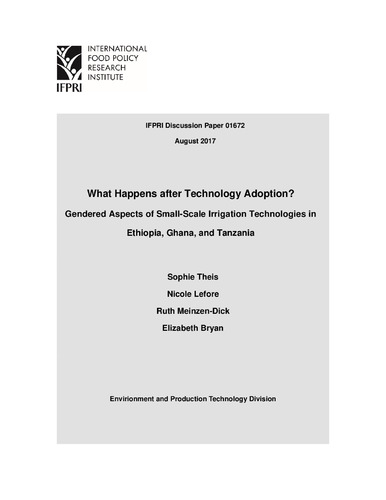What happens after technology adoption? Gendered aspects of small-scale irrigation technologies in Ethiopia, Ghana, and Tanzania
Abstract
This paper complements the gender and technology adoption literature by shifting attention to what happens after adoption of a technology. Understanding the expected benefits and costs of adoption from the perspective of women users can help explain the technology adoption rates that are observed and why technology adoption is often not sustained in the longer term. Drawing on qualitative data from Ethiopia, Ghana, and Tanzania, this paper develops a framework for examining the intrahousehold distribution of benefits from technology adoption, focusing on small-scale irrigation technologies. The framework contributes to the conceptual and empirical exploration of jointness in control over technology by men and women. It does this by identifying a series of decisions following technology adoption, and how these decisions affect how the technology is used, by whom, to whose benefit, and with what costs.

